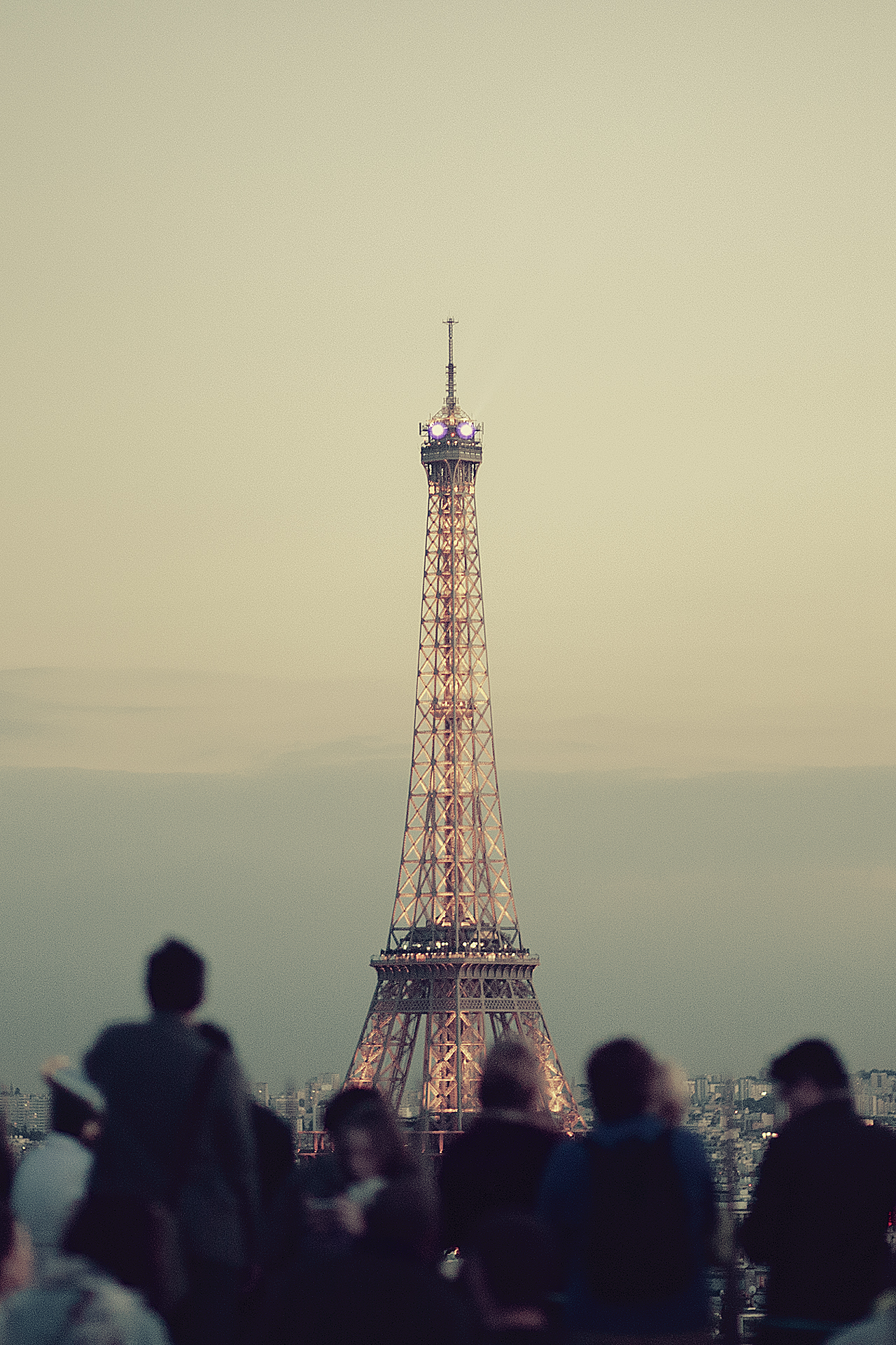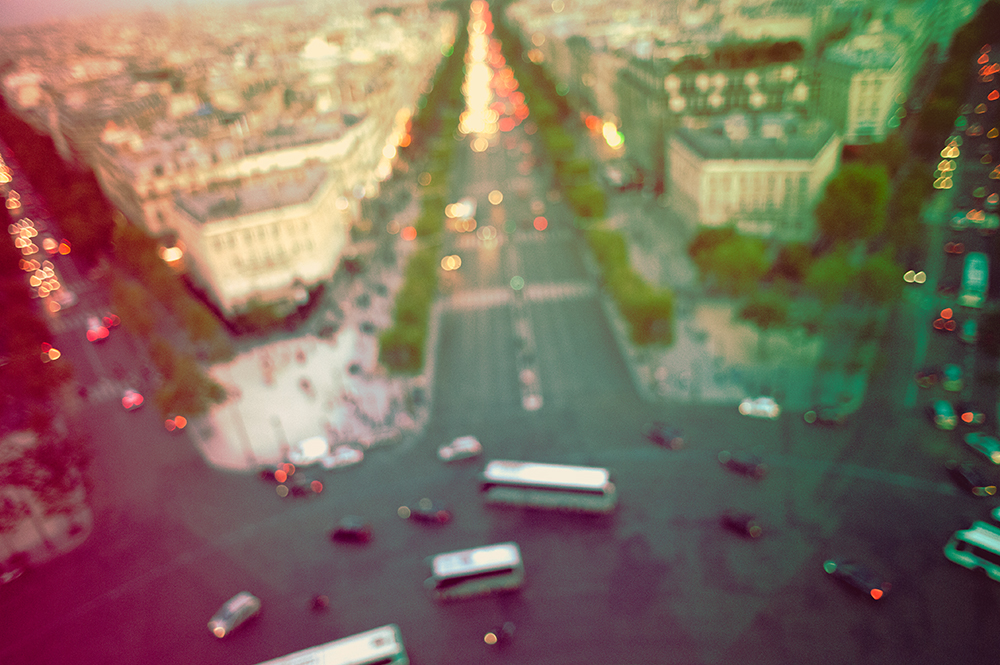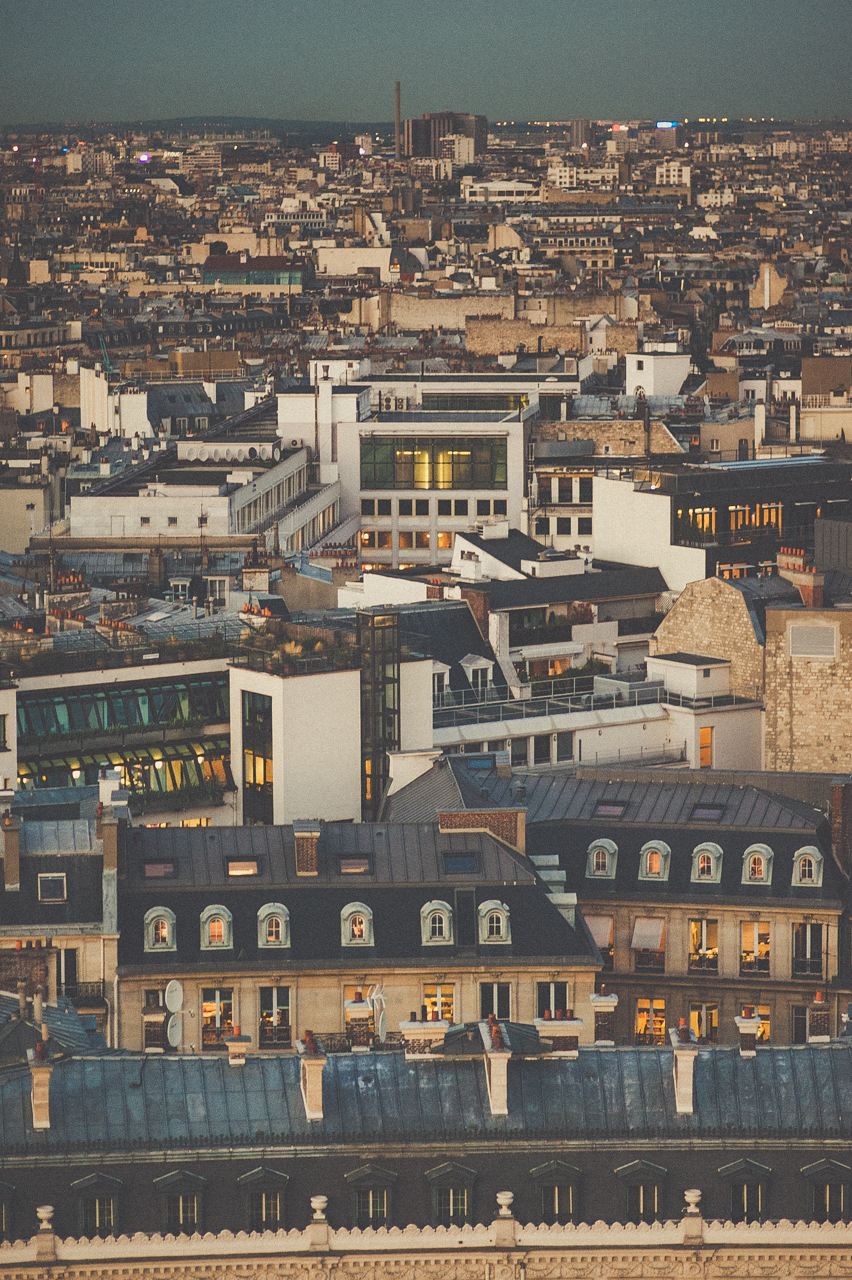 For the most part, our time in Paris was spent trying to trick the casual observer into assuming we were Parisian. Only betraying the illusion to beg that je ne parlez pas francias.There’s an allure, an elegance to the French which, admittedly, must come in part from adegree of patriotism which would feel more in line with American exceptionalism. But in Paris it is not about me, or even us, but about Paris. It is a city which does not look out togreater Europe or the United Kingdom or anywhere else in the world. Perhaps because all of the ideas Paris cares to explore are right there before it. Because of it the people, the fashion and the architecture are all so distinctly Parisian as to never stray particularly far from their portrayal in fiction. Under the rich cream archways I felt only some extra traffic and advertisements away from Rosemary Hoyt in Tender is the Night.
For the most part, our time in Paris was spent trying to trick the casual observer into assuming we were Parisian. Only betraying the illusion to beg that je ne parlez pas francias.There’s an allure, an elegance to the French which, admittedly, must come in part from adegree of patriotism which would feel more in line with American exceptionalism. But in Paris it is not about me, or even us, but about Paris. It is a city which does not look out togreater Europe or the United Kingdom or anywhere else in the world. Perhaps because all of the ideas Paris cares to explore are right there before it. Because of it the people, the fashion and the architecture are all so distinctly Parisian as to never stray particularly far from their portrayal in fiction. Under the rich cream archways I felt only some extra traffic and advertisements away from Rosemary Hoyt in Tender is the Night.
 Progressively, Paris became what I could fit into the frame of a photograph. There is a license afforded in holding a camera. The license is to act and feel like somewhat of a fool, to step out, to bend over, climb. When I look back at those photos I remember less the place than I do taking the photo. Liz took some photos of me taking photos where I look utterly ridiculous, perched at the top of a hill, or laid flat on a busy street.
Progressively, Paris became what I could fit into the frame of a photograph. There is a license afforded in holding a camera. The license is to act and feel like somewhat of a fool, to step out, to bend over, climb. When I look back at those photos I remember less the place than I do taking the photo. Liz took some photos of me taking photos where I look utterly ridiculous, perched at the top of a hill, or laid flat on a busy street.  As well as a license, at times the camera was a responsibility. To get the photo I wanted, as ridiculous as it made me look and feel. It was the camera which made me hook my strap around my arm as I leant it over the railing of the Arc De Triomphe. The Arc, not the Tower, because Liz’s sister had told us that all the best views of Paris have the Eiffel Tower in them. It was for the camera I had lain down flat on my stomach in the busy streets of the fourth arrondissement, camera in one hand and the lens, detached in the other. The detached lens part is a trick, you can either buy a very expensive tilt-shift lens, or you can replicate the same effect on any lens with the tradeoff of dramatically increasing the risk of dropping something.
As well as a license, at times the camera was a responsibility. To get the photo I wanted, as ridiculous as it made me look and feel. It was the camera which made me hook my strap around my arm as I leant it over the railing of the Arc De Triomphe. The Arc, not the Tower, because Liz’s sister had told us that all the best views of Paris have the Eiffel Tower in them. It was for the camera I had lain down flat on my stomach in the busy streets of the fourth arrondissement, camera in one hand and the lens, detached in the other. The detached lens part is a trick, you can either buy a very expensive tilt-shift lens, or you can replicate the same effect on any lens with the tradeoff of dramatically increasing the risk of dropping something.
People come back from holidays and spare a moment for the wonder of digital photography. Lamenting the distresses of old: There was still film in the back. I only had enough money or room for three rolls, we had to really pick what we wanted a photograph of. We never knewhow a photograph was going toturn out. I shot film for a while,I took less photographs, I could only afford so many. But the demands of the camera remained. The same ridiculous angles and the same holidays spent four steps behind my girlfriend, casually calling her and snapping a frame as she turned around. More than any poet needs a muse a photographer needs a pretty woman at their call to shove a lens in front of at a moment’s notice. Who knows how they manage to keep them. Perhaps a photoshoot is a more romantic proposal than I’d believed.
There’s not a lot of nostalgic value to the photographs, whilst there’s plenty of the bridge where part of Inception was filmed. They are of the several times I made Liz walk from end to end, so that I could photograph her. It was just a bridge, the photo we tookwas nice, but nothing as much can be said of the bridge. Afterwards we were exhausted, stopped into the first cafe which advertised free wifi, because we still couldn’t fully workout the trains. Liz had a cappuccino, myself an espresso. We a gin and tonic each. Figuring the caffeine and alcohol would cancel each other out, more or less. That was the night wewere going to the Arc. If I took photos of the tedious spiral staircase- where Liz’s heels slipped twice- I must have deleted them. There were even days where I didn’t take the camera with me at all. During those days in no particular order we visited the cafe where Simone De Beavoir and Jean Paul Sartre sat and slowly got drunk and had bitter conversations about their affairs and how much they didn’t want to marry each other because existence was meaningless, or something to that effect. We also went to the cafe where Amelie was filmed, which was more pleasant. We saw the Eiffel Tower from the top of a hop on, hop off tour bus. Liz got quite excited but I’d seen it before as an underwhelmed fourteen year old, and so looked out elsewhere, at nothing in particular.  There was another time when we were walking through canals past midnight and stopped by some musicians. They asked wherewe were from, first in French and then in English. We replied that we were from Australia.They replied they were from Melbourne. Of all the interesting people we could have met that night, typical, we got stuck with Melbourners. They took us to an Irish pub across the road with an English bartender, they had bloody marys, I had a Guinness and Liz had a tequila sunrise. One of them invited us to her twenty first the next day. We didn’t go because we wanted to go to the Arc De Triomphe again, before sunset this time. In time perhaps I’ll forget the moments I didn’t shoot. Perhaps my computer will geta virus or an electrical surge and the files will all go; I haven’t backed them up. Perhaps I’ll get a new girlfriend and go on other holidays and the details of my second time in Paris will fade into oblivion. It’s a little frightening to think we’ve afforded such significance to the small clicks, a two hundredth of a second here, a one hundred and twenty fifth there. They’re just the light which happened to be there, around us, bouncing off us, flipped and filtered through eight lens elements, recorded on the sensor as somewhere between one and two hundred and fifty five, three times, for the colours blue, red, and green, multiplied four thousand times wide and three thousand times high. 35mm, f/2.5, 1/25,1600ISO. 85mm, f/2.8, 1/4000, 400ISO. There’s nothing special about it at all. But we will remember ourselves as we were, fumbling around Paris, trying to be who we looked like in our photographs.
There was another time when we were walking through canals past midnight and stopped by some musicians. They asked wherewe were from, first in French and then in English. We replied that we were from Australia.They replied they were from Melbourne. Of all the interesting people we could have met that night, typical, we got stuck with Melbourners. They took us to an Irish pub across the road with an English bartender, they had bloody marys, I had a Guinness and Liz had a tequila sunrise. One of them invited us to her twenty first the next day. We didn’t go because we wanted to go to the Arc De Triomphe again, before sunset this time. In time perhaps I’ll forget the moments I didn’t shoot. Perhaps my computer will geta virus or an electrical surge and the files will all go; I haven’t backed them up. Perhaps I’ll get a new girlfriend and go on other holidays and the details of my second time in Paris will fade into oblivion. It’s a little frightening to think we’ve afforded such significance to the small clicks, a two hundredth of a second here, a one hundred and twenty fifth there. They’re just the light which happened to be there, around us, bouncing off us, flipped and filtered through eight lens elements, recorded on the sensor as somewhere between one and two hundred and fifty five, three times, for the colours blue, red, and green, multiplied four thousand times wide and three thousand times high. 35mm, f/2.5, 1/25,1600ISO. 85mm, f/2.8, 1/4000, 400ISO. There’s nothing special about it at all. But we will remember ourselves as we were, fumbling around Paris, trying to be who we looked like in our photographs.
 Josh Wells
Josh Wells